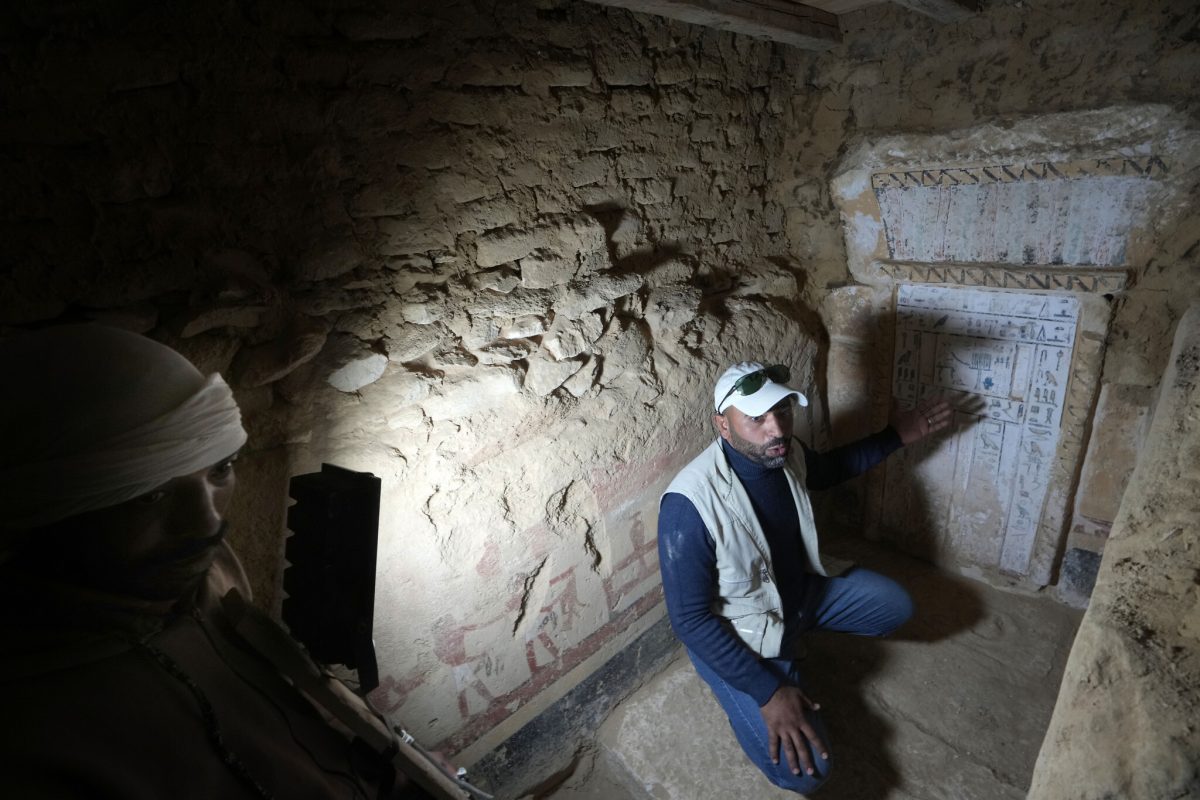This past Thursday in Egypt saw the announcement of the discovery of a mummy covered in gold leaf, a set of 4,300-year-old tombs belonging to important figures, and an ancient king’s keeper of secrets.
These various finds, which seem to have been dated back to the fifth and sixth dynasties of the Old Kingdom between 2686-2181 B.C., were unearthed out in Saqqara, south of Cairo, in the wake of an excavation that has been ongoing for close to a year. As the leader of the dig and Egypt’s former Minister of State for Antiquities Affairs, Archeologist Zahi Hawass had the honor of publically announcing the new suite of discoveries.
“This mummy may be the oldest and most complete mummy found in Egypt to date,” stated Hawass about the discovered remains of a man, who has been identified as Hekashepes, that was coated in gold. He went on to add that the mummy had remained entirely sealed “just as the ancient Egyptians left it 4,300 years ago.” Hekashepes was discovered in a close to 50-foot-long shaft reposed in a limestone sarcophagus.
The group’s archeologists were able to determine the name because it had been lavishly inscribed at the head of the sarcophagus as “HqA-Sps,” or Hekashepes. Hawass explained that this mummy is the oldest non-royal mummy discovered within the country, and it is also the oldest ever discovered to have been wrapped entirely in gold leaf, as reported by CBS News.
Archeologists expressed to the outlet that this type of burial given to Hekashepes normally means that he was most likely a person of high importance, stating, “Of course, he was important. For someone to make a sarcophagus like this, 15 meters under the ground, he should be a very important man.” It ended up reportedly taking two hours of hard work for the group of archeologists to get the lid off in order to unveil the monumentous discovery.
Located inside of another tomb was an ancient king’s “secret keeper,” explained the group. The former minister of antiquities claimed that “the second largest tomb belonged to Meri, who held many important titles, such as keeper of the secrets and assistant of the great leader of the palace.” A “secret keeper” was a high-profile title for a senior official that could carry out religious rituals, as explained by the outlet France 24.
Despite how massive the finds previously mentioned were, they were not the largest discovery.
“The most important tomb belongs to Khnumdjedef, an inspector of the officials, a supervisor of the nobles, and a priest in the pyramid complex of Unas, the last king of the fifth dynasty,” expressed Hawass, going on to add that it was “decorated with scenes of daily life.”
A different tomb was seemingly for a man named Fetek, who was reportedly a judge and writer.

